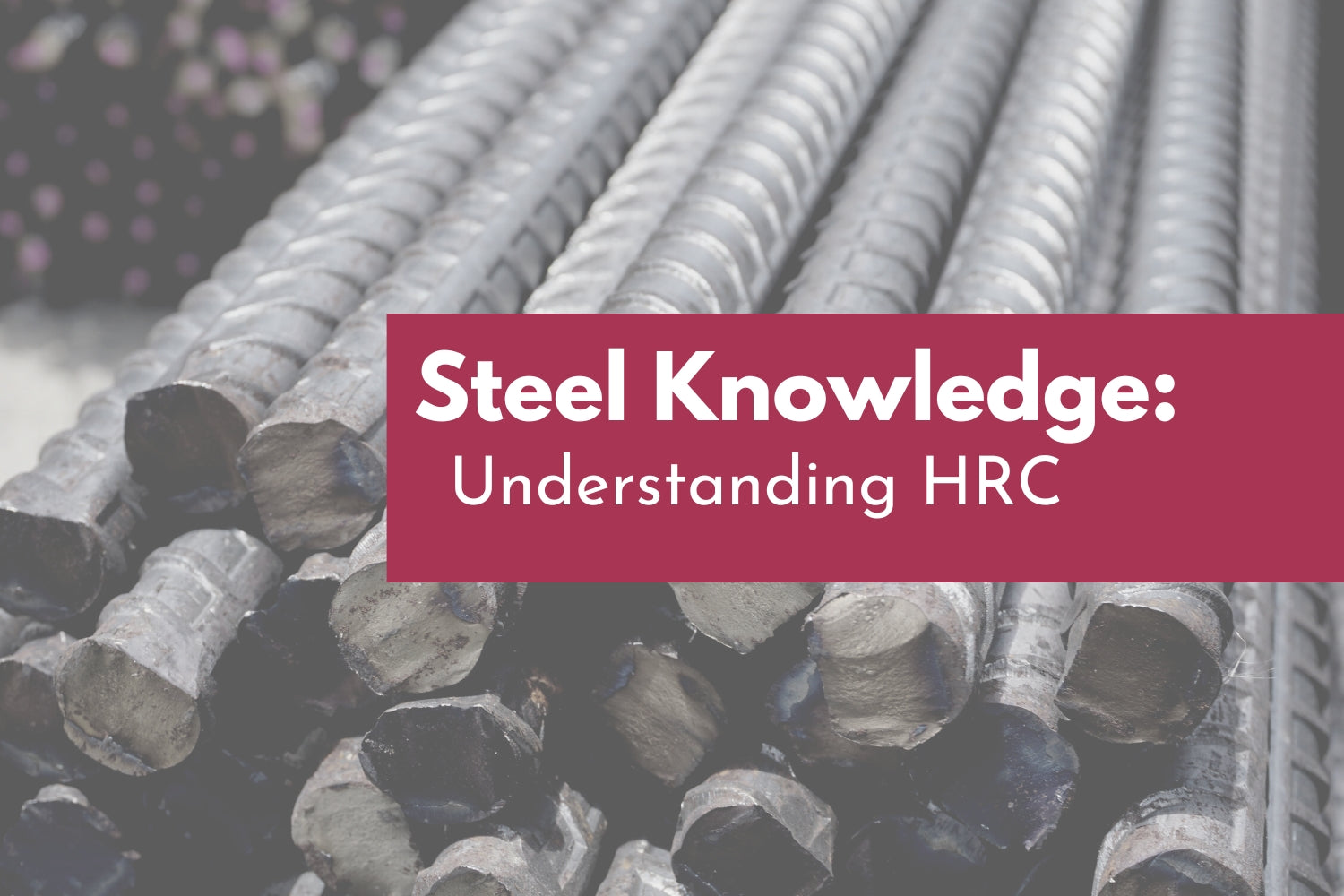The Rockwell scale C, also known as HRC, is a method used to measure the hardness of a knife. A higher hardness level means the knife can be sharper and maintain its edge for extended periods. Typically, kitchen knives have a hardness range of 50-65+ HRC, with most consumer knives falling between 52-62 HRC. However, it's important to note that knives with a lower HRC rating will dull more quickly.
Want to see our 60-62HRC knives? Click here or come into our store on Goodwood Road in Adelaide.
It's essential to consider the trade-offs when choosing a knife. Knives with a higher HRC rating can be more brittle and prone to chipping or breaking if not used properly. On the other hand, knives with a lower HRC rating may not chip or break as easily but will lose their edge more quickly.
Let's delve deeper into the topic to make informed choices when selecting and using knives.
How Does the Rockwell Scale Work?
The Rockwell method of measuring the hardness of a material is commonly used for blade steels. Developed by Hugh and Stanley Rockwell in the early 20th century, it involves the use of a diamond-tipped cone that is pressed into the steel at two levels of pressure.
The Rockwell hardness test applies a specific amount of force for a particular time. The results are calculated using a mathematical formula and are expressed as a number on the standard Rockwell scale. For knives, the test is performed on the C scale, with values ranging from 40 to 65.
The Rockwell procedure for knife-making involves two different tests. The first is a light force test, which measures the metal's hardness or resistance to a controlled force. A slight indentation is made on the metal, and the depth, known as Value A, is recorded. This value serves as a basis for calculations.
The second test involves applying a heavy force to the same spot on the metal surface. The penetration level, Value B, is then measured and recorded. The testing technician subtracts Value A from Value B, and the resulting number is transferred to the Rockwell C scale. This value represents the metal's Rockwell hardness indicator.
What's the Significance of a High Rating on the Rockwell Scale?
When assessing steel strength, a high rating on the Rockwell C scale indicates that the steel is hard. Values in the mid-50s or above are considered high. However, a high rating does not always mean the steel is the best choice for a specific application. More rigid steel may be more brittle and difficult to sharpen, making it less suitable for specific industrial knife uses.
The terms "malleable" and "brittle" are often used to describe steel with different Rockwell C ratings. As steel becomes harder, it also becomes more brittle. For example, tough steel with a Rockwell C rating in the 60s may be too fragile for reliable use in industrial machine knives.
While high-rated steel maintains its edge well, it can be challenging to achieve a sharp edge.
Special tools such as ceramic or diamond sharpening stones are typically required to sharpen high-rated steel. These materials are expensive and require a high level of skill to use. Even with a fine edge, high-rated steel knives can still be prone to chipping or breaking if they come into contact with a hard object.
While high-quality steel has its place in industrial knife fabrication, it is crucial to consider the potential downsides and select the appropriate hardness for the intended use. Professional guidance may be necessary to make the best choice.
What’s the Significance of a Low Rockwell Hardness Rating?
A knife with a low Rockwell C (RC) rating indicates that the steel used in its composition is relatively soft. Soft steel is malleable and can bend and deflect better than intricate and brittle steel. This can make it beneficial for industrial machine knives, as they are less likely to break or chip when coming into contact with materials that are not intended to be cut.
Knives made from soft steels typically rate in the 40s and low 50s on the RC scale. While these knives may not hold an edge as well as more rigid materials, they are easy to sharpen and require less expensive equipment or advanced techniques to maintain.
On the other hand, knives with a high RC rating are generally harder and will stay sharp for a more extended period between sharpening. However, when they lose their edge or suffer damage, they are more difficult to repair and may be more expensive to replace. This trade-off should be taken into consideration when choosing a knife.
What Is a Good Rockwell Hardness for a Knife?
When it comes to kitchen knives, the hardness of the steel plays a crucial role in their performance and longevity. More rigid steel with a Rockwell hardness of 58-62 will hold an edge better but may also be more prone to chipping or breaking. Therefore, these knives require extra care to avoid damage to their thin edges.
On the other hand, softer steel is more durable but won't maintain an edge for long.
Here's a quick rundown of the Rockwell Hardness scale:
|
Rockwell Hardness |
Characteristics of Knives |
|
52-54 HRC |
Cheap, needs sharpening |
|
54-56 HRC |
Sharpen a few times a day for professional use. Suitable for home cooks. |
|
56-58 HRC |
Easy to sharpen, used in professional kitchens |
|
58-60 HRC |
High quality, stays sharp longer, harder to sharpen |
|
60-62 HRC |
Remain sharp for a long time, but have more risk of becoming brittle |
|
63-66 HRC |
Needs cleaning after each use, prone to breaking and becoming brittle |
A softer steel is preferred for tools like axes and chisels as it can withstand impact and constant use. Meanwhile, pocket and hunting knives benefit from harder steel for slicing and cutting tasks.
When it comes to survival knives, durability is vital. A Rockwell hardness of 55-58 is ideal for a knife that will be put through extreme, rugged use and may be used for chopping wood, digging, and prying. While a knife with a lower hardness may dull faster, it is more likely to survive intact.
Why a Range of RC Numbers?
A range of Rockwell numbers is used when measuring the hardness of a knife because Rockwell testing is only done on a small area of the metal, and the results may vary in nearby areas. Additionally, the test only measures the surface hardness, and the material's interior may have a different hardness.
To account for these variations, manufacturers typically provide a range of numbers for their knives. This range allows for some margin of error in the test results, and the actual hardness of the entire object will lie within that range.
Conclusion
The HRC rating is a crucial factor in determining the quality of a kitchen knife. Knives with a low rating, such as 52, may be easy to sharpen but require frequent maintenance due to poor edge retention. Conversely, knives with a high rating, like 62 or above, may be tough but also brittle and prone to breaking. An ideal range for a quality kitchen knife is between 58 and 60 on the HRC scale.




